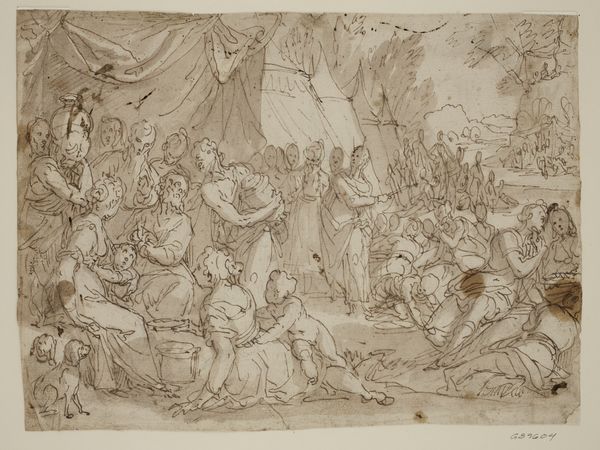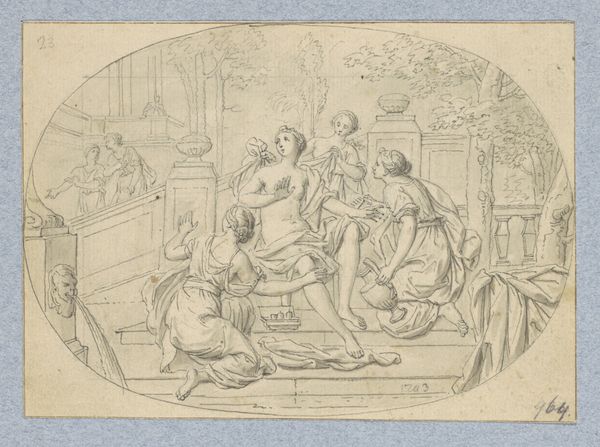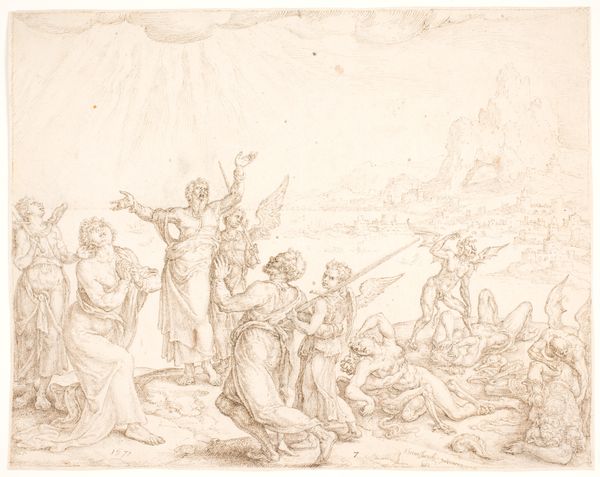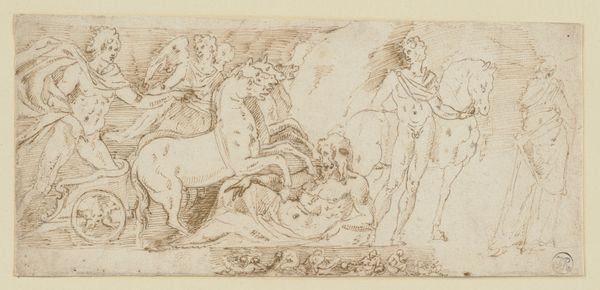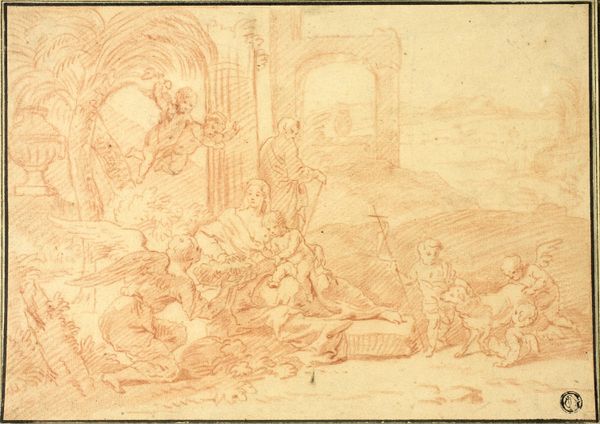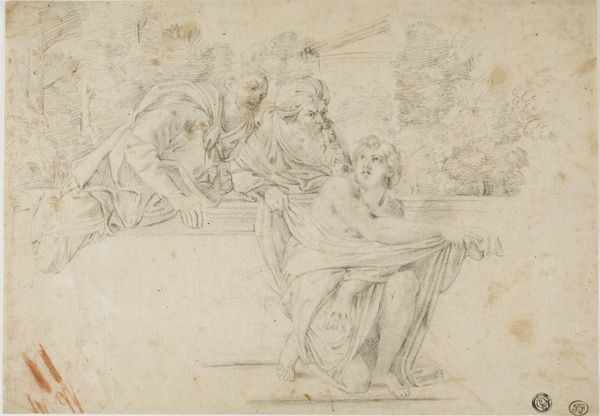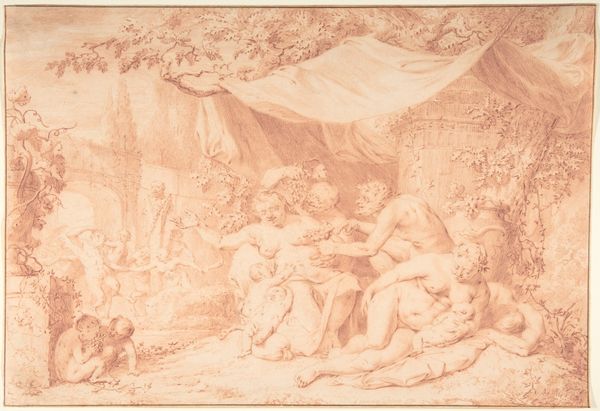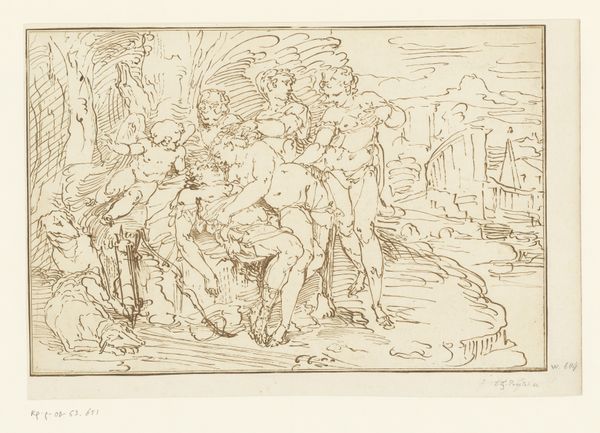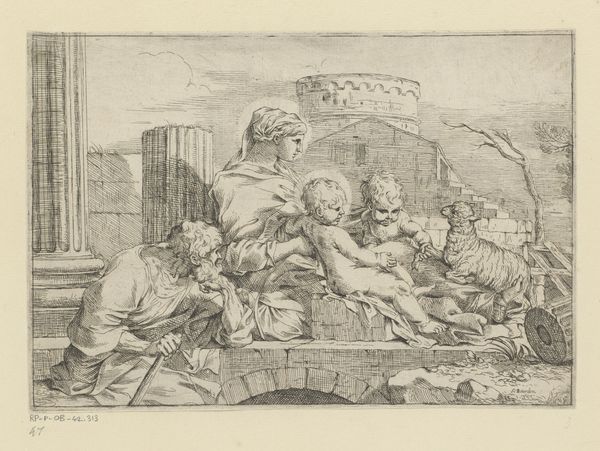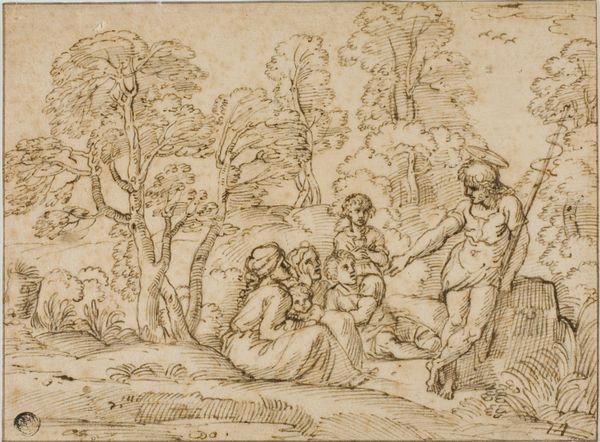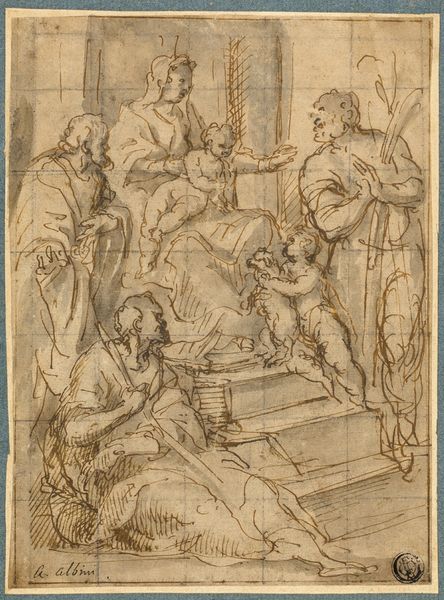
Die Heilige Familie mit der Heiligen Elisabeth und dem Johannesknaben in einer Landschaft
0:00
0:00
drawing, painting, paper, ink
#
drawing
#
baroque
#
painting
#
landscape
#
etching
#
figuration
#
paper
#
ink
#
history-painting
Copyright: Public Domain
Curator: Up next is an etching, a drawing in ink on paper, called "The Holy Family with Saint Elizabeth and the Young John the Baptist in a Landscape". It's attributed to Nicolas Poussin and resides here at the Städel Museum. Editor: There's a gentle dreaminess to it, like looking at a half-remembered story. The linework is so delicate, it almost floats off the page. But it does lack dramatic action or emotional heft, almost a casual religious observation. Curator: Yes, but don’t you think this casualness is exactly where the politics begin? Poussin, as a baroque artist, often employed classical restraint and rationality to temper the overwhelming passion we see elsewhere. Here, in the landscape framing the holy figures, is a political stage where nature's ideal balance is quietly asserted. Editor: That balance is nice in theory, I guess, but I think of it in the same way as Marie Antoinette playing milkmaid. How do such controlled depictions serve those whom such an image attempts to ennoble, uplift or immortalize? Where’s the messiness of family? Curator: Precisely! This idyllic rendering offers a carefully constructed narrative about the Holy Family as a cornerstone of social order. Through the very act of portraying them so calmly, Poussin tacitly advocates for the values of his patrons and the Church, and implies its power. The very medium chosen here, a drawing—something that may serve a model for a future history painting—hints at institutional production, its life in art, and as historical argument. Editor: Hmmm. The more I think about it, the more I agree. It is subtle propaganda, a quiet assertion of idealized domesticity used to justify... what? Perhaps all kinds of societal imbalances. I see now how such carefully rendered peace could be so pointed. Curator: And Poussin wasn’t necessarily interested in direct political agitation through art, but more so in using his classical sensibilities to uphold certain power structures. Editor: Thanks for unraveling that for me. At first glance, it seemed so simply pleasant. Now I realize its power lies in its calculated placidity. Curator: It's like he is using aesthetics as a form of social rhetoric, a visual language meant to persuade rather than just please. Editor: Very thought-provoking, indeed. This unassuming etching reveals a whole universe of intention beneath the surface, it goes much further beyond surface charm.
Comments
No comments
Be the first to comment and join the conversation on the ultimate creative platform.

